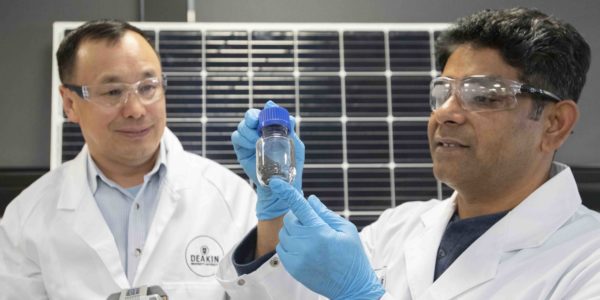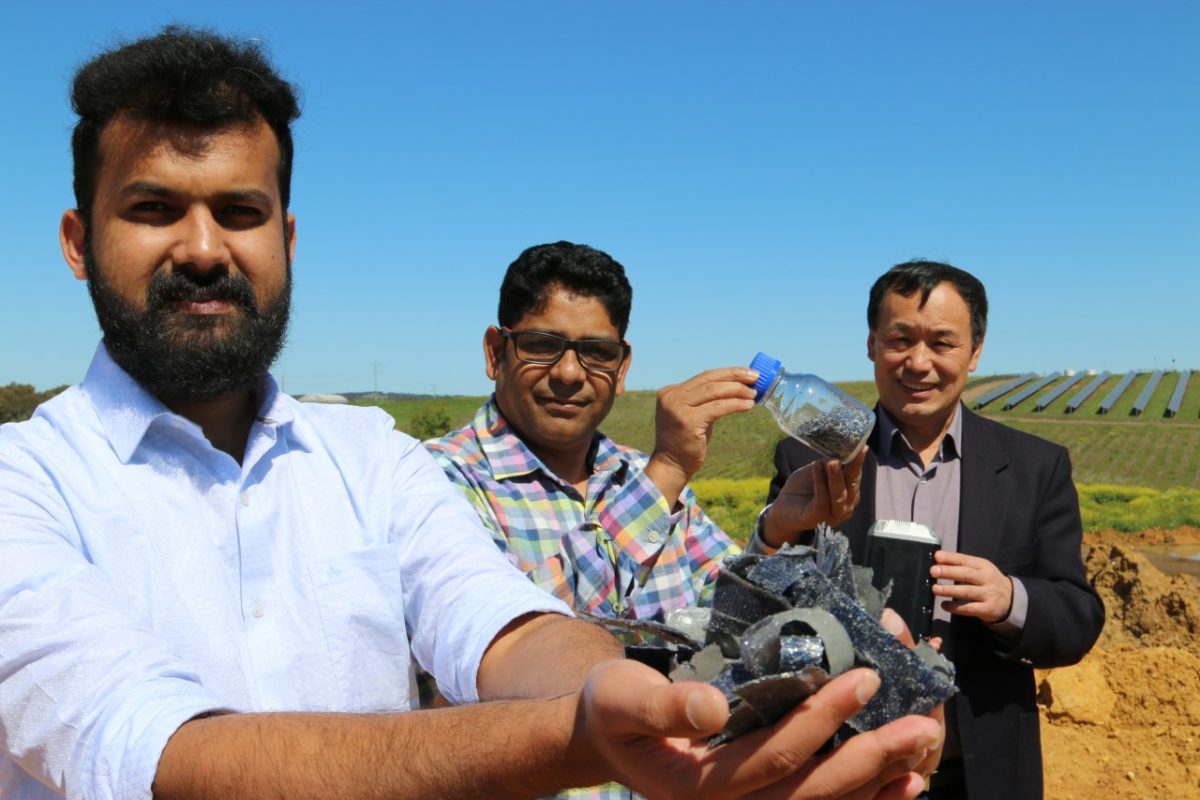Scientists from Deakin University’s Institute for Frontier Materials (IFM) have developed what they say is a sustainable method to extract silicon from solar panel waste and reconfigure it into nano-silicon which is then used to make high-energy anodes for lithium-ion batteries.
Silicon makes up a relatively small proportion of a solar panel cell and until now it has been difficult to extract that silicon and reduce it down to its nano particles without using hazardous chemicals like hydrochloric acid and nitric acid.
Material scientists Mokhlesur Rahman and Ying Chen, director of the ARC Research Hub for Safe and Reliable Energy, which is based at the IFM in Geelong, said they have developed a thermal and chemical process to extract the silicon from solar waste that is cheap, effective and safe for the environment.
The process then takes the purified silicon and reduces its size to nanoscale using a ball-milling process. Again, without the need for toxic chemicals.
The nano-silicon is then mixed with graphite to create a battery anode that the researchers said has been shown to increase lithium-ion battery capacity by a factor of 10.
“We are using that nano-silicon to develop low-cost battery materials that will help deliver the higher-performing, longer-lasting, affordable battery technology critically needed to drive Australia’s clean energy transition,” Rahman said.

Image: Deakin University
The scientists said the process, which they have been investigating since 2019 and have repeatedly tested and reviewed to prove it can work and be scaled up for commercial use, is key to repurposing discarded solar cells and will prevent high-value waste from going to landfill.
“Solar panel cells are fabricated using high-value silicon but this material cannot be re-used without purification as it becomes highly contaminated over the 25 to 30 years of the panel’s life,” Rahman said.
“We have developed a process that returns silicon collected from used cells to greater than 99% purity, within a day and without the need for dangerous chemicals.”
Rahman said the process is far greener, cheaper, and more efficient than any other technique currently on the market and represents a breakthrough that could make recycling solar panels far more economically viable.
The current market price for nano-silicon is about $45,000 per kilo, compared to about $650 for regular silicon.
The IFM team estimate its technique could generate more than $20 billion in material recovery if extrapolated to the 78 million tonnes of solar panel waste expected to be generated globally by 2050.
Chen said the process – including purification, nano-silicon production and integration into new battery technology – “is a giant leap forward in how we tackle the problem of solar panel waste.”
“Silicon recovered from end-of-life solar panels can be a massive, sustainable source of nano-silicon to meet future demand for raw battery materials. Helping to power the homes, transport and communities of the future,” he said.
It is forecast that more than 100,000 tonnes of end-of-life solar panels will enter Australia’s waste stream by 2035.
This content is protected by copyright and may not be reused. If you want to cooperate with us and would like to reuse some of our content, please contact: editors@pv-magazine.com.









3 comments
By submitting this form you agree to pv magazine using your data for the purposes of publishing your comment.
Your personal data will only be disclosed or otherwise transmitted to third parties for the purposes of spam filtering or if this is necessary for technical maintenance of the website. Any other transfer to third parties will not take place unless this is justified on the basis of applicable data protection regulations or if pv magazine is legally obliged to do so.
You may revoke this consent at any time with effect for the future, in which case your personal data will be deleted immediately. Otherwise, your data will be deleted if pv magazine has processed your request or the purpose of data storage is fulfilled.
Further information on data privacy can be found in our Data Protection Policy.